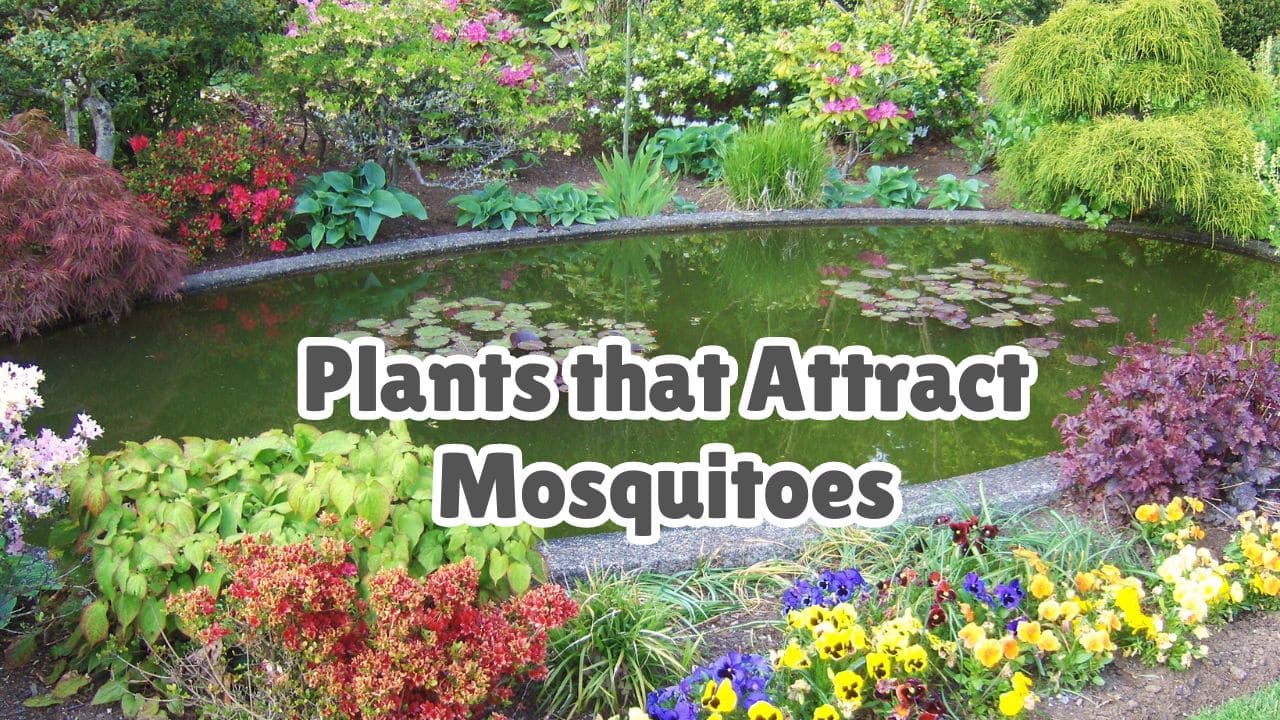Table of Contents
Why mosquitoes are attracted to certain plants?
Mosquitoes are attracted to water, and any plant that can hold sufficient water and provides shade and humid climate will naturally attract mosquitoes. As most of us always try to focus on factors and conditions that repel mosquitoes and forget about those that may attracts them. By adopting to certain changes in our surrounding including plants that may be attracting mosquitoes, we can avoid their interference to a great extent.
There are also certain plants that provides nectar to male mosquitoes. While female mosquitoes may occasionally feed on nectar for energy, if they do not get bloodmeals.
Mosquitoes needs standing source of water with moist, humid and dark environment. Many plants attract mosquitoes by providing them the required shelter with shade, moisture and humid climate.
In this article, we will see various plants that are responsible for attracting mosquitoes to your home, yard and garden.
Plants that attract mosquitoies
The following plants are known for attracting mosquitoes and providing them the breeding grounds consisting of sufficient moisture with cold and humid environment as needed for egg laying.
1. Water Lilies
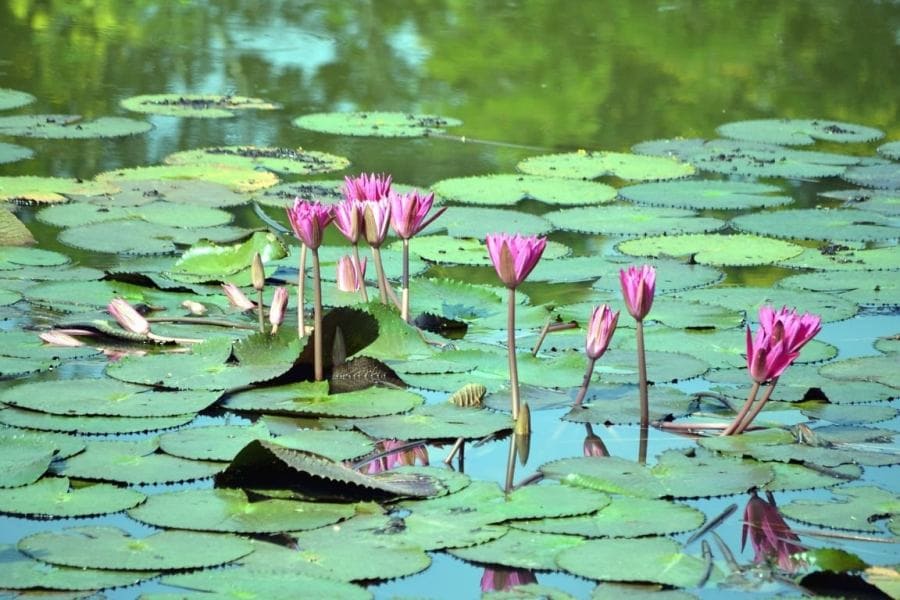
Image Credit: Pixnio by anajim | Content License
Water lilies are aquatic plants that might look beautiful for your garden pond but they actually provide an ideal environment or breeding ground for mosquitoes. The lilies usually grow in stagnant source of water and holds good amount of water itself. The large broad leaves of water lilies provide shade and protection to mosquito larvae breeding in the water. Thus, its a perfect spot for mosquito breeding.
What should you do: Do a regular checkup and inspect your garden ponds and fountains/water features for mosquito larvae. Install pump or aerator to keep the water moving and make the pond less hospitable for mosquito breeding.
2. Water Hyacinth
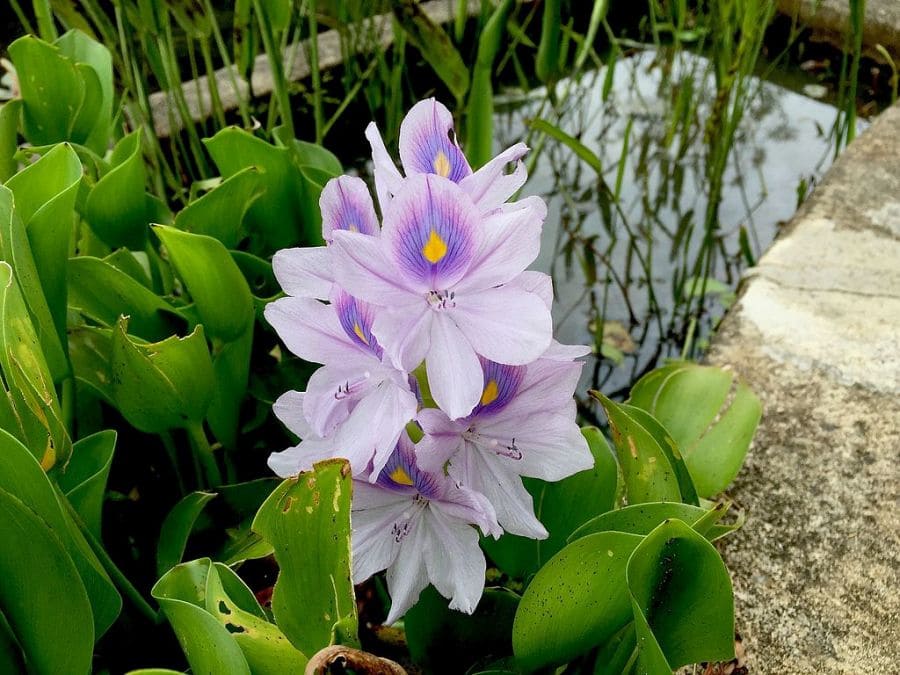
Image Credit: Wikimedia by Liou Yin | Content License
Water Hyacinths are also aquatic plants like water lilies and they float in stagnant or slow moving water bodies. Most commonly found in ponds floating at the surface. These floating water plants provide shade and shelter to mosquito larvae below them and thus become an ideal breeding grounds for mosquitoes.
What should you do: Clean by skimming and removing any excess water hyacinth leaves that might form large patches of stagnant water which may act as perfect breeding spots.
3. Tall Grasses, Dense Bushes and Shrubs
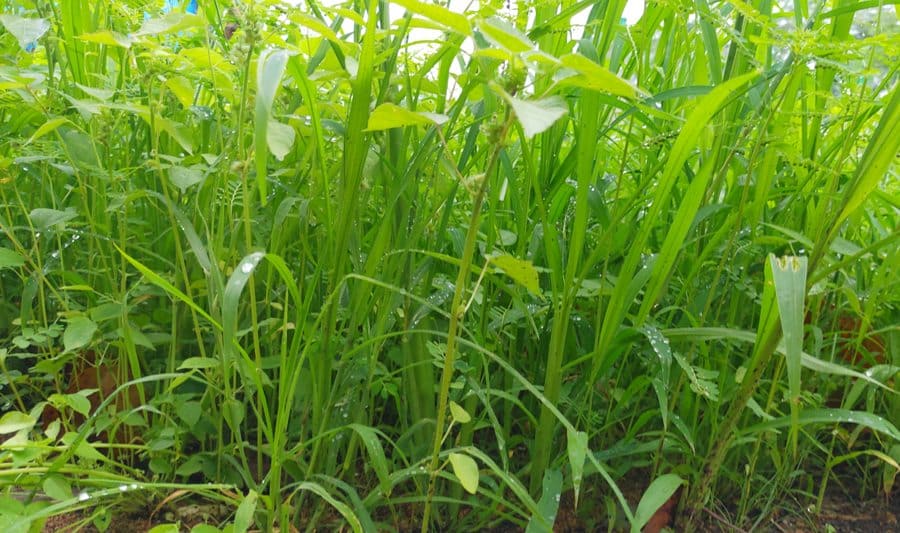
Image Credit: pxhere.com by PurushothRam26 | Content License
Tall grasses provide shady regions with moist and humid climate to which mosquitoes are attracted. Tall grasses, thick shrubs and bushes traps moisture and provide dark, moist and shaded regions which are just perfect mosquito hiding spots.
What should you do: Keep the grasses short, trim them regularly, and dispose off the grass clippings. Avoid any dense growth of shrubs and bushes. Clearing and trimming any overgrown areas and removing excess moisture can help in reducing the number of hiding spots for mosquitoes.
4. Papyrus
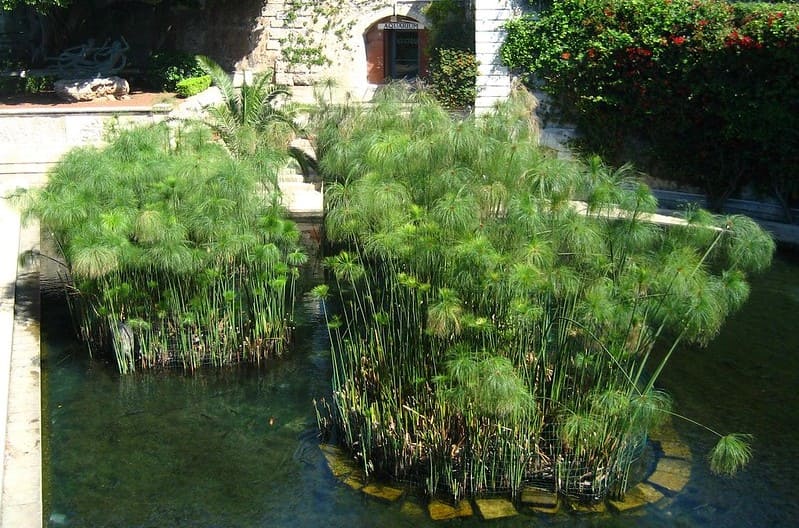
Image Credit: Flickr by Stacy Spensley | Content License
Papyrus are another kind of aquatic plants that are found mainly in garden ponds, wetlands where it gives an added aesthetic appeal to your pond. They are grass like plant with triangular stems and grows preferably in shallow water.
They gives a unique appearance and are easier to care and maintain. However, they create a damp moist environment which attracts mosquitoes and allows mosquito breeding.
What should you do: Avoid water accumulation around the papyrus plants that may provide stable breeding environments.
5. Taro
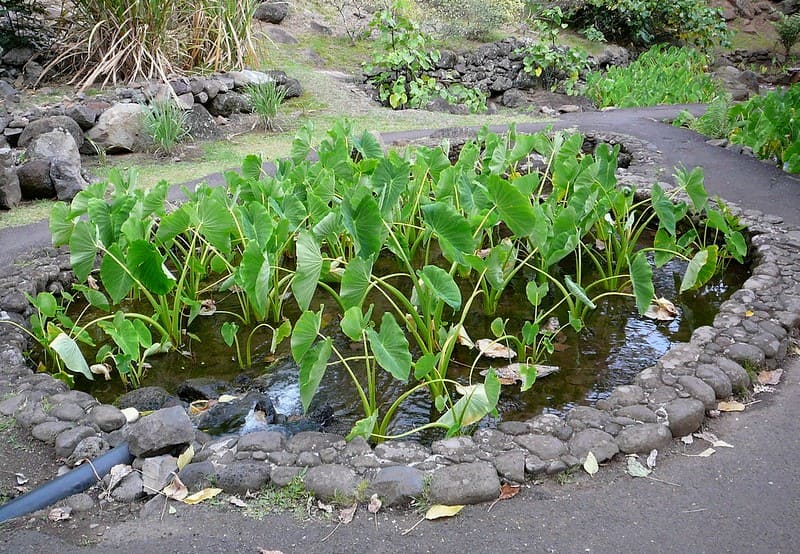
Image Credit: Flickr by stephenrwalli | Content License
Taro is a tropical plant which looks like starchy root vegetable and is edible, but is different from Ube (Purple Yam). The broad leaves of taro plants has small pools of water that attracts mosquitoes. These water pooling on the taro leaves serves as small miniature breeding sites for mosquitoes.
What should you do: Do check your taro plants after rains and shake them off for any accumulated water over their leaves.
5. Water Lettuce
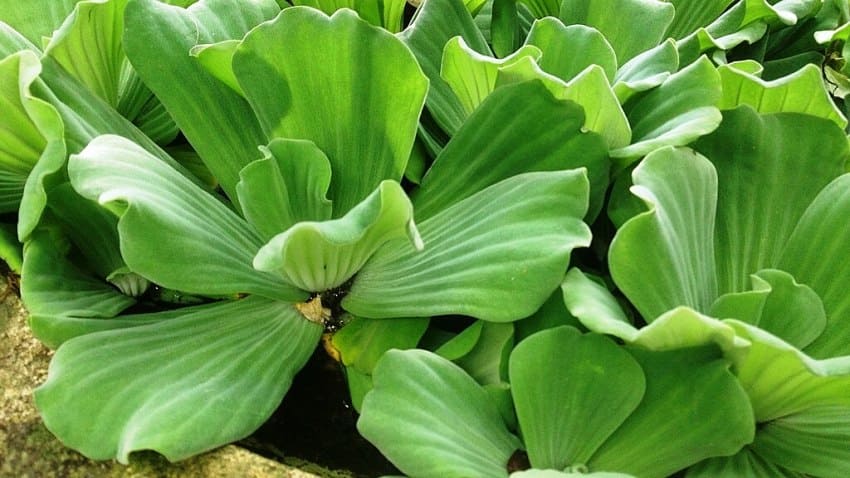
Image Credit: Wikimedia by Mokkie | Content License
Water lettuce also called as water cabbage or shellflower are invasive plants and leave behind the algae while competitng for nutrients in water, thus preventing any uncontrolled algal growth.
These are non-edible pond plants that used to decorate garden ponds or aquariums. Thick layer of water lettuce can restrict water flow and cause water accumulation and stagnant water bodies. These provides damp climate with shaded regions and stagnant water for mosquito breeding.
What should you do: Clear off any excess overgrowth of water lettuces mats in water bodies that may cause restricted water flow or dense cover above the water surface..
6. Bamboo
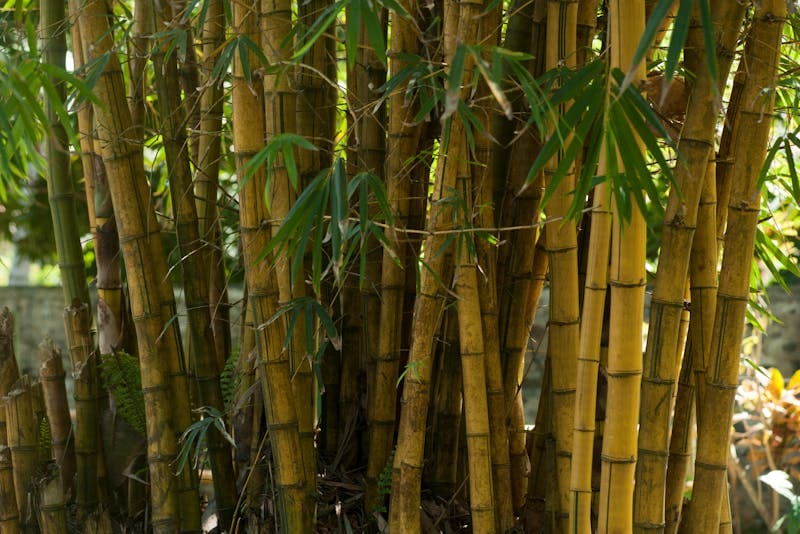
Image Credit: Pexels by Oleksandr P | Content License
Bamboo trees are one of the fastest growing plants that grows very tall and have a very dense coverage. They provide a unique different vintage look to any landscape and has many applications in landscaping works.
Bamboo stems have a tendency to hold large quantities of water mainly after the rains. These hollow spaces within the bamboo stems ahve sufficient trapped water which acts as mosquito breeding sites, where the mosquitoes get dark, moist and humid climate.
The regions around bamboo plants has many small rain water accumulation sites which can accelerate the mosquito infestation in the surrounding.
What should you do: Check for any water build up inside the hollow bamboo stems and provide proper drainage systems.
7. Fruit-bearing Trees
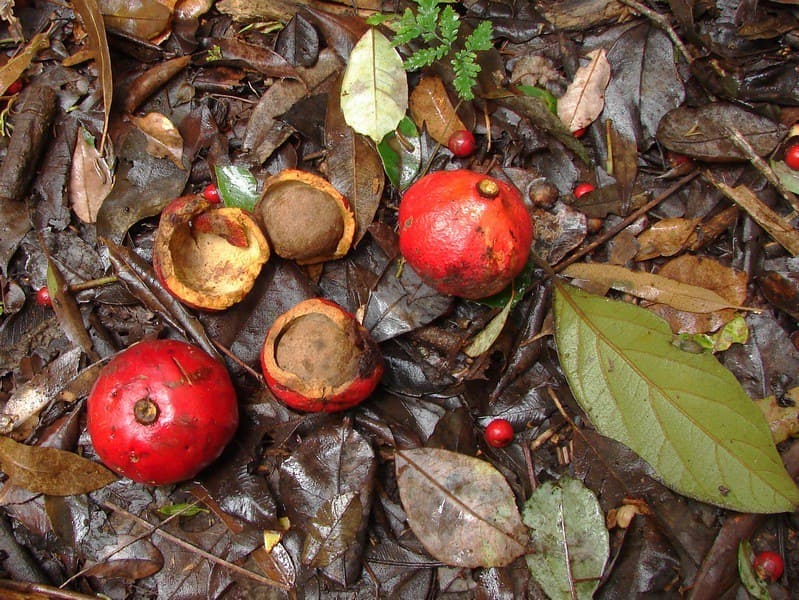
Image Credit: Flickr by Tatters | Content License
Fruit bearing trees like oranges or other citrus fruits attracts mosquitoes only when they are in bloom or floral stage and the mosquitoes are attracted to its nectar. While other fruit bearing trees not directly attracts mosquitoes, but when these fruits ripe and fall down and begin to rot (fruit decay) they attract many other pests which also contributes to the same problem.
What should you do: Keep your garden frre from any decaying organic matter. Remove and dispose fallen fruits that may rot and invite problems later.
8. Flower Blooms that are Rich in Nectar
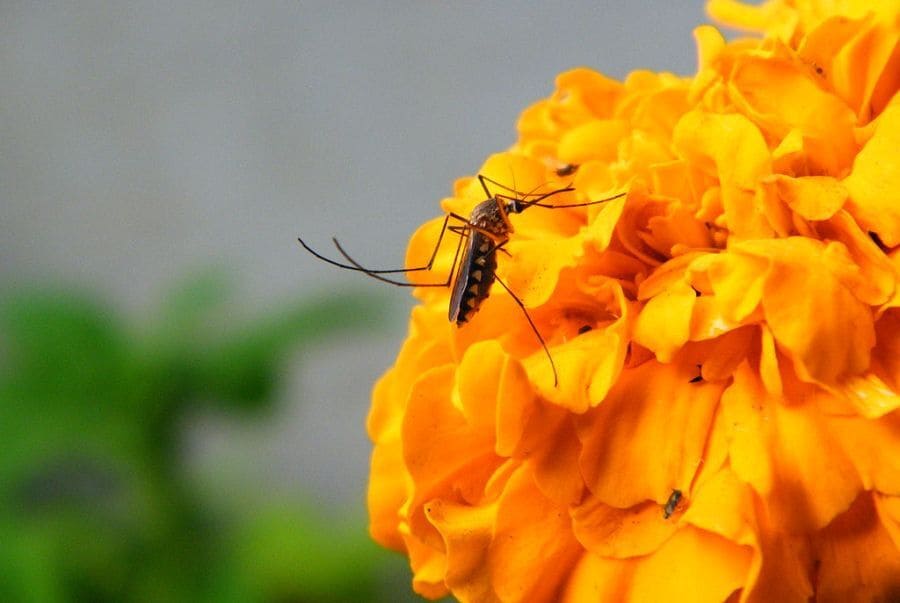
Image Credit: Wikimedia by Abhishek727 | Content License
Flower blooms that produce nectar or plant juices is the actual food source for male mosquitoes, whereas the female mosquitoes mostly depends on bloodmeals. These male mosquitoes completely rely on plant juices and nectar, while female mosquitoes may consume for extra source of energy.
And then on subsequent mating, the female mosquitoes lays eggs and initiate the breeding process. In the garden blooms, the nectar-producing plants are actually the mosquito feeding plants.
What should you do: You can’t reduce the number of flowering plants in your garden as they give a beautiful look and appearance. You can grow along with mosquito repelling plants that will restrict mosquitoes to a great extent.
How to minimize mosquito attraction to your garden?
As we have already listed various plants that attract mosquitoes, now here we will see what we can do or change to keep mosquitoes away and avoid mosquito infestation in or around our garden:
1. Eliminate standing water
Eliminate standing water sources like watering pots, rain water barrels, container lids, bird baths, gutters, dog water bowls, septic tanks, etc. and also accidental accumulation of water in any unexpected places like formation of puddles, eaves of roof, water pooling on car covers, tarpaulins, blinds and shades, etc.
2. Install Aerator or pump to give motion in water bodies
By installing aerator or pump in pond or water features we can create motion in water and that will restrict mosquitoes for laying eggs, as they won’t prefer to lay eggs in moving water.
2. Grow mosquito repelling plants
In your garden, add mosquito repelling plants that may create envoronment that is not attractive for mosquitoes. Plants like citronella, eucalyptus, lavender will add aesthetic to your garden as well as keep mosquitoes away.
3. Encourage natural predators
Mosquito predators like dragonflies, frogs and tadpoles, geese and ducks, mosquito fish (gambusia affinis), goldfish, bats, and mosquito eating birds like purple martin, swallows, house wrens, finches, cardinals, American robin, and many other migratory singbirds can be very helpful in reducing mosquito population in your garden.
4. Proper maintenance of garden plants and pond
Trim and shred your garden for overgrown grass and thick shrubs. Dispose off the grass clippings and clear the area and remove any clutter like old tires, toys, containers, etc. Repair any puddles and marshy lands that holds water after rain. Clean your pond for any excess green coverage that may provide nutrition to mosquito larvae breeding in your pond water.
5. Kill mosquito larvae
After sighting any signs of mosquito breeding in your garden or pond, you must take necessary action to kill them at the larval stage itself. There are many options to kill mosquito larvae including some home made remedies given in our other blog posts.
The most effective method to kill mosquito larvae is using mosquito dunks, which is a naturally occuring larvicide and safe for other animals, pets and birds.
Conclusion
It may be surprising for you that many common plants, even grasses and bushes in your garden may be attracting mosquitoes. Plants like papyrus, water lilies, water hyacinth, bamboo, tall and thick grasses and shrubs, etc. actually create stable mosquito breeding environment and hence attract mosquitoes.
You need to take certain measures and steps to avoid creating hospitable environments for mosquitoes. Regular maintenance and cleanliness is required at all stages if you own a garden, pond, water features, etc. Preventing mosquito breeding is much more important than fighting or repelling mosquitoes later.

